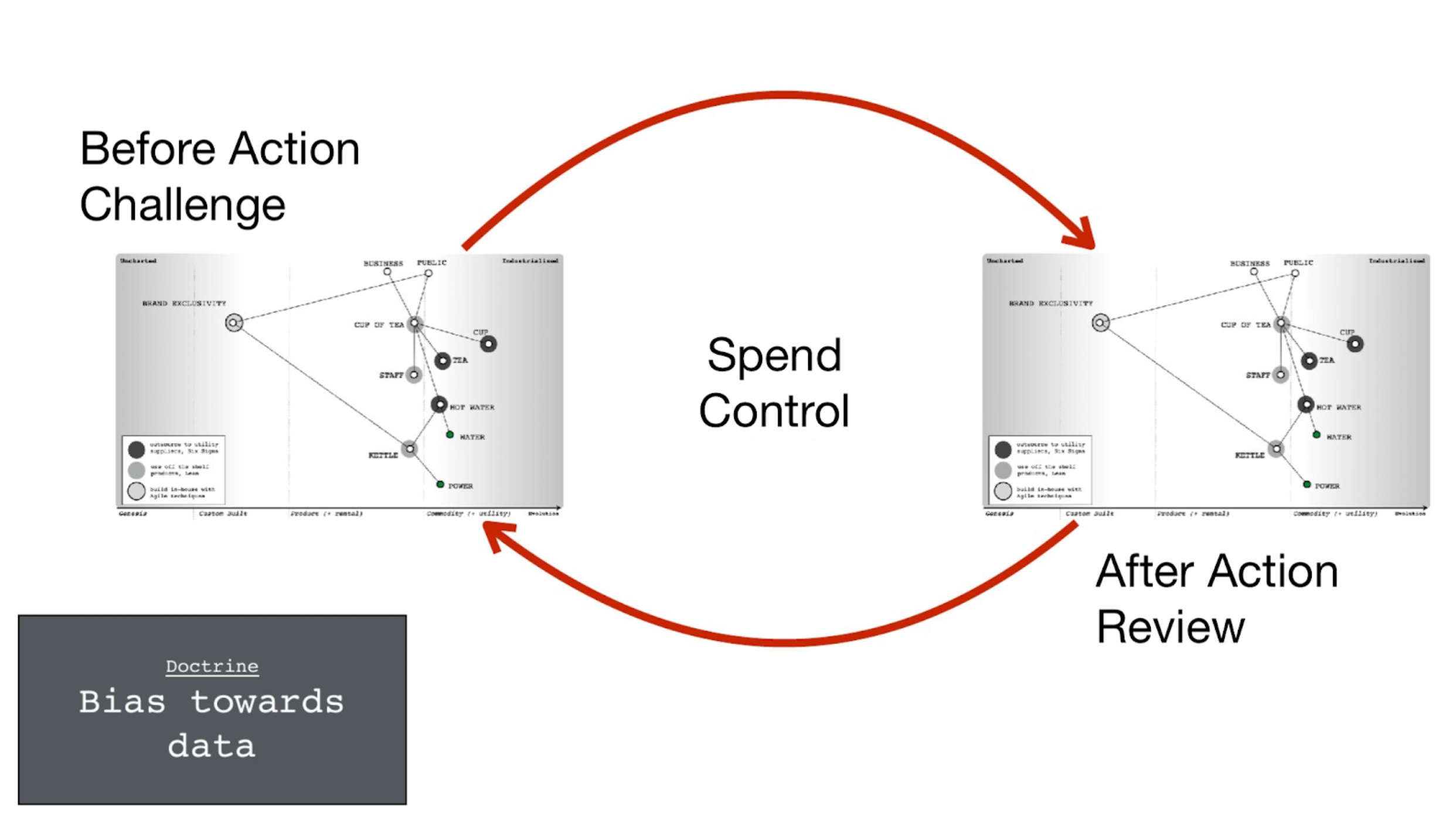Phase: Stop Self Harm
Principle: Bias Towards Data
Bias Towards Data
Learning
Motivation
The purpose of mapping is not only to create a map and a shared understanding. It is also to learn climatic patterns, doctrine and context specific play. Maps provide a systematic way of doing this as long as you collate, review and learn from them. Have a bias towards such learning and the use of data.
Consider these first
Illustrative description
Use a systematic mechanism of learning.
Detailed description
Up to now, Spend Control provided challenge before new projects and actions. Now, add an After Action Review to learn what happened with those projects and actions. Use the same mechanism of communication: maps. This completes the feedback loop of learning. This feedback loop is a repeatable process:
- Produce a map.
- Challenge the map.
- Decide what to do.
- Act.
- Update the map based on the outcome.
- Conduct After Action Review to learn.
- Go to step 1.

The After Action Review improves future Before Action Challenges. Before Action Challenges provide the base from which we learn.
Reminder: Stop reading, take action
